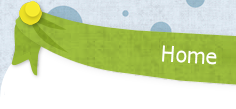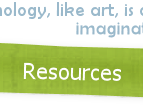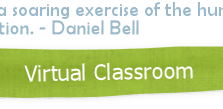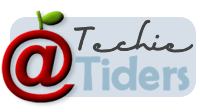As your eyes are being opened to the mind blowing number of Web 2.0 sites that are currently available, you might wonder how in the world you can use all this "stuff". Sure most of you know all about several social tools such as Facebook and Twitter to name a few. Isn't there more? Isn't there more to Web 2.0 than the coolest new social hangout? The answer is YES! Yes, there is more available than you can probably wrap your head around.
I would hate to blow your mind so early in the semester, so we will just take a quick look at a general overview of Web 2.0 and then pick one of those tools you could start using now to get ready for your post secondary plans.
Web 2.0 is a term used to describe a second generation of the Internet/WWW. This second generation web is interactive and often referred to as the Read Write Web. Previously, websites were static; this old web, web 1.0, was also called the Read Web. I bet you can figure out why! Web 2.0 changes pretty much everything from web design to business to education to friendship circles. Below you can see a list of some of the popular site types.
TYPE EXAMPLE
Blogs Blogger
Microblog Twitter
Wikis Wikispaces
Social Networking Facebook
Social Bookmarking Diigo
Podcasting iTunesU
Photo Sharing Flickr
Video Sharing YouTube
Let's take a close look at one of these, wikis. Wikis are websites that can easily be built collaboratively using a basic Word type interface for users to edit and create. How could you use this for your future post secondary plans? Why not get started creating your own eportfolio? An eportfolio is an awesome addition to your college applications.
You can use a free wiki such as wikispaces and begin building today! By starting before graduation you have time to include numerous files, pictures, and information. Did you know many college students create eportfolios to accompany their job resumes? You could consider this your trial run! Here are some things you might want to include:
About Me
Community Service
Courses
Clubs/Organizations
Letters of Recommendation
Personal Hobbies
Projects
Resume
Recognitions and Awards
Writing
Don't get too bogged down thinking you dont have enough to put in an eportfolio. Just start with a basic cover page and the "about me" section. Do have others help edit and give suggestions. This could help bring in extra cash while applying to college. My oldest son had great success getting additional money after they viewed his eportfolio, and it wasnt some huge website. It made him stand out. If fact they even mentioned that they rarely had someone turn in anything other than the application. Dont forget to look at other people's portfolios for examples. Whether they are paper portfolios or eportfolios from high school or college students, they can give you numerous ideas.
Have fun diving into the world of Web 2.0! There is a whole other world out there!
Sunday, January 13, 2013
Wednesday, August 22, 2012
 Blogging 2012
Blogging 2012
During the fall semester, you will have a blogging assignment each week. We will actually edit this post during class:) The grade on this assignment will focus on different writing skills weekly BUT will be build comprehensively each week.
Revisit today's "Daily journal," what do you think our first skill focus will be? Revisit the links provided and take notes as needed.
How to create a catchy blog opening
How to create a catchy title
Blogging in similar to what you already do in English classes, except length is typically less than 250 words and it is more interactive in nature because you include links to allow your reader to dive deeper into some of your topics/key words.
Revisit today's "Daily journal," what do you think our first skill focus will be? Revisit the links provided and take notes as needed.
How to create a catchy blog opening
How to create a catchy title
Blogging in similar to what you already do in English classes, except length is typically less than 250 words and it is more interactive in nature because you include links to allow your reader to dive deeper into some of your topics/key words.
Friday, February 10, 2012
 Got More Code?
Got More Code?
When first beginning the journey of coding, most feel they are looking at a foreign language, but just a few days later you begin to recognize pieces here and there that make sense. My students have begun traveling this road and just a short time later are creating multiple html/html5 pages. It didn't take long before various students were finding other codes to integrate with the html.
One such code popping up around the room was javascript, so I invited a guest speaker, Phillip Kilgore, to dig a little deeper into the world of code. Basically we have been dealing with static webpages, but as we have explored previously, your generation is all about Web 2.0. What does this mean? You naturally want something dynamic. Don't you like it more when you can interact with a website, not just read? Well today is your lucky day! Not only will you have an introduction to javascript, but you will also have a chance to ask about particular elements you would like to add to your webpages (see online classroom for these files).
Did you miss the presentation? Here is the presentation file to learn more (or even just review).
Are you thinking about majoring in a computer science related field? Make sure and check out LSUS! This is where Philip is completing his masters and actually works as a researcher.
One such code popping up around the room was javascript, so I invited a guest speaker, Phillip Kilgore, to dig a little deeper into the world of code. Basically we have been dealing with static webpages, but as we have explored previously, your generation is all about Web 2.0. What does this mean? You naturally want something dynamic. Don't you like it more when you can interact with a website, not just read? Well today is your lucky day! Not only will you have an introduction to javascript, but you will also have a chance to ask about particular elements you would like to add to your webpages (see online classroom for these files).
Did you miss the presentation? Here is the presentation file to learn more (or even just review).
Are you thinking about majoring in a computer science related field? Make sure and check out LSUS! This is where Philip is completing his masters and actually works as a researcher.
Sunday, January 29, 2012
 Getting Started Coding with HTML
Getting Started Coding with HTML
Html files are just normal text files with the extension .htm, .html, or .shtml. You can think of html as learning how to "talk" to the computer in its language, so it will display what you want. We will be using Text Wrangler in our class to create the html files. Let's take a look below at basic html:
<html>
<head>
<title>The title of your webpage goes here</title>
</head>
<body>The body text goes here. These are the words that appear on your webpage.</body>
</html>
You will begin the document by typing <html>. This communicates "Attention Computer, I am speaking html to you." You always end the document by communicating "Attention Computer, I have completed talking to you in html." This is done using </html>. Numerous html code components are open and shut in the same manner.
A great place to get started learning code is online such as W3Schools and Lisa Explains It. Once you have a basic understanding of code, you can simply test it out online such as with the Tryit Editor on W3.
Of course the Internet is always changing and the new web standard is actually HTML5. Don't worry this won't involve too much of a transition. In fact, You can quickly see the new (and eliminated) code using an HTML5 Tag Reference sheet.
What are some of your favorite html/html5 codes you have tried?
<html>
<head>
<title>The title of your webpage goes here</title>
</head>
<body>The body text goes here. These are the words that appear on your webpage.</body>
</html>
You will begin the document by typing <html>. This communicates "Attention Computer, I am speaking html to you." You always end the document by communicating "Attention Computer, I have completed talking to you in html." This is done using </html>. Numerous html code components are open and shut in the same manner.
A great place to get started learning code is online such as W3Schools and Lisa Explains It. Once you have a basic understanding of code, you can simply test it out online such as with the Tryit Editor on W3.
Of course the Internet is always changing and the new web standard is actually HTML5. Don't worry this won't involve too much of a transition. In fact, You can quickly see the new (and eliminated) code using an HTML5 Tag Reference sheet.
What are some of your favorite html/html5 codes you have tried?
Sunday, January 8, 2012
 Web Design and Web 2.0
Web Design and Web 2.0
 When you think back to a time without the Internet, it is sometimes hard to remember for some and for others the Internet has always been here. Have you ever wondered what was the first communication between computers? lo. Yes, "lo" was the first transmission in October 1969! The actual word was "login" but the system crashed after the first two letters were transmitted. Sometimes a crashing failure is just the beginning of a whole new world!
When you think back to a time without the Internet, it is sometimes hard to remember for some and for others the Internet has always been here. Have you ever wondered what was the first communication between computers? lo. Yes, "lo" was the first transmission in October 1969! The actual word was "login" but the system crashed after the first two letters were transmitted. Sometimes a crashing failure is just the beginning of a whole new world!Being an 80's teen, I can definately remember life without the Internet especially as mainstream as it is now-a-days. Can you believe that only 1% of information flowing through two way communication in 1993 was from the Internet? By 2000 this had increased to 51% which was right before the term "web 2.0" was coined by Tim O'Reilly in 2004. This marked the beginning of a dramatic shift in the Internet. By 2007 this number was increased to 97%. Wow, what a difference!
This shift from a read only web, Web 1.0, to a read write web, Web 2.0, has made a dramatic impact on web design. In the past, the ability to design websites was limited to those with the ability to code using language such as html. When the shift of the Internet first started, software was being produced to allow people to create websites with no code experience. People with experience in common software such as PowerPoint could have a website. Other software such as FrontPage and Dreamweaver was produced for even more control over the design elements.
This Techie Tiders website is a great example of how the shift of the Internet has opened the world of web design to anyone. Using blogs, wikis, and numerous other online tools allow even people with just basic computer knowledge to have a presence on the web. Even social networks such as Facebook are being used for websites.
How else has this Internet shift helped web design? Just a few years back you would need to purchase software to create dynamic text, edit photos, and so on. Now you have numerous sites from which to choose. A great example of this is Photoshop software. There are dozens of site that now allow you to edit photos or create your own images such as Pixlr. There are tons of other examples. What other ways has Web 2.0 had an effect on web design?
Tuesday, January 3, 2012
 Welcome to Web Design!
Welcome to Web Design!
Are you excited about getting started on the new semester? Have you ever felt "out of the loop" with technology? Ok maybe not as "out of the loop" as the walkman man! LOL
While we discover the world of web design, you will be immersed in everything geeky. Ok, not everything, but you will discover a world of possibilities outside of Facebook and gaming.
Have you heard of the 365 day project? Basically it is a project where you document your year through daily pictures. Numerous sites even have easy ways to post such as Flickr, and others have themes to help you come up with ideas. Some people have taken the idea and added their own twist, such as Paula Naugle. She is posting a picture of one tweet from the day that helped her learn and connect with others.
We are going to have our own twist to this project. You will be in this class for 44 days, so we will run a 44 day techie project. Each day you will write a blog post including a picture of the day. This picture will be of something techie from a screen shot of a awesome site to a graphic you have created. These blog posts can be in our online classroom or you can choose your own platform such as Posterous or Blogger.
I'm looking forward to seeing things through your eyes:)
While we discover the world of web design, you will be immersed in everything geeky. Ok, not everything, but you will discover a world of possibilities outside of Facebook and gaming.
Have you heard of the 365 day project? Basically it is a project where you document your year through daily pictures. Numerous sites even have easy ways to post such as Flickr, and others have themes to help you come up with ideas. Some people have taken the idea and added their own twist, such as Paula Naugle. She is posting a picture of one tweet from the day that helped her learn and connect with others.
We are going to have our own twist to this project. You will be in this class for 44 days, so we will run a 44 day techie project. Each day you will write a blog post including a picture of the day. This picture will be of something techie from a screen shot of a awesome site to a graphic you have created. These blog posts can be in our online classroom or you can choose your own platform such as Posterous or Blogger.
I'm looking forward to seeing things through your eyes:)
Tuesday, November 1, 2011
 Techie Tuesday: Online Resources
Techie Tuesday: Online Resources
With the billions of websites out there, it is sometimes hard to find the exact ones you would like to integrate into your daily life. Where can you go to find the perfect websites? Sorry, but there isn't a quick answer to this.
Know What You Want
You need to first know for what type of site you are looking. Maybe you are having trouble keeping up with your favorite websites. You know the drill. I found the most awesome site on (insert fav topic here), and now I can't find it. You need a bookmarking site! I personally love Diigo. It isn't enough to just sign up for a site. You have to also prepare to use it. How can you do this? Here are a couple of examples:
Maybe you are looking for an online site on which to keep notes. Honestly you have to search and find the one that fits your style. Here are a few examples:
Oh, you want something even more "real life"? How about couponing? I'm sure you have watched at least part of an Extreme Couponing episode. I must admit I have been greatly intrigued by the amount of savings. I've even tried out a few tricks using the Sunday Circular and weekly sales. There is a big difference in what I am doing and the $1000 savings you see online, which brings up another key component in finding online resources, TALK to others! Yes, this seems like a simple option, but sometimes it is used last or not at all. If you are looking for something, there is someone else that is already using it (or looking for the same). If you can't find someone, turn to a social site such as twitter and ask others!
FYI Another colleague (friend) and myself have truly been interested in couponing. We have looked around, but not found the huge deals "like TV". Through talking, we found out that another one of our colleague's, Peggy Lacobee, is having great success with couponing. She is actually presenting Techie Tuesday for this week on just that! Here are a few resources she shared:
http://thekrazycouponlady.com/
http://www.couponsthingsbydede.com/
http://coupondivas.com/
What resources would you like to find? Do you have a favorite to share?
Know What You Want
You need to first know for what type of site you are looking. Maybe you are having trouble keeping up with your favorite websites. You know the drill. I found the most awesome site on (insert fav topic here), and now I can't find it. You need a bookmarking site! I personally love Diigo. It isn't enough to just sign up for a site. You have to also prepare to use it. How can you do this? Here are a couple of examples:
- Use the Browser Add-on for your work and home computer. This makes it super easy to "click and add" a website.
- Use tags. By tagging the websites, you are able to search by topic. It's like your own digital filing cabinet.
- Use your smart phone. Most smart phones have the capability to automatically save websites to your bookmarking site such as Diigo. An app will even allow you to access your sites on the go!
Maybe you are looking for an online site on which to keep notes. Honestly you have to search and find the one that fits your style. Here are a few examples:
Oh, you want something even more "real life"? How about couponing? I'm sure you have watched at least part of an Extreme Couponing episode. I must admit I have been greatly intrigued by the amount of savings. I've even tried out a few tricks using the Sunday Circular and weekly sales. There is a big difference in what I am doing and the $1000 savings you see online, which brings up another key component in finding online resources, TALK to others! Yes, this seems like a simple option, but sometimes it is used last or not at all. If you are looking for something, there is someone else that is already using it (or looking for the same). If you can't find someone, turn to a social site such as twitter and ask others!
FYI Another colleague (friend) and myself have truly been interested in couponing. We have looked around, but not found the huge deals "like TV". Through talking, we found out that another one of our colleague's, Peggy Lacobee, is having great success with couponing. She is actually presenting Techie Tuesday for this week on just that! Here are a few resources she shared:
http://thekrazycouponlady.com/
http://www.couponsthingsbydede.com/
http://coupondivas.com/
What resources would you like to find? Do you have a favorite to share?
Subscribe to:
Posts (Atom)






















